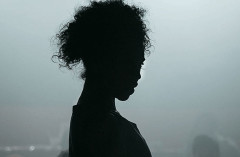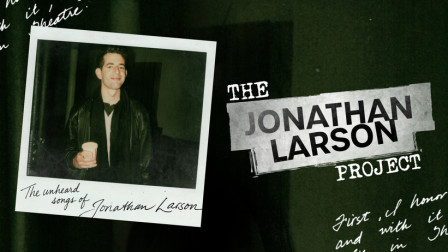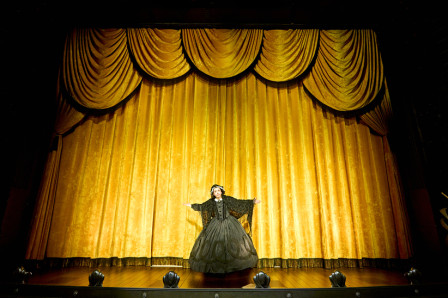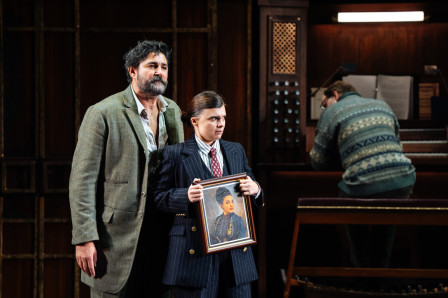Review: TWILIGHT: LOS ANGELES, 1992 at The Gate Theatre
 Anne Deavere Smith’s Twilight: Los Angeles, 1992 is theatre as communal autopsy. It’s an attempt to comprehend the riots which took place in the wake of the beating of taxi driver Rodney King by 4 police officers, and the overly lenient sentencing of Korean shopkeeper Soon Ja Du, who shot 15-year-old African American Latasha Harlins after an altercation in Du’s liquor store.
Anne Deavere Smith’s Twilight: Los Angeles, 1992 is theatre as communal autopsy. It’s an attempt to comprehend the riots which took place in the wake of the beating of taxi driver Rodney King by 4 police officers, and the overly lenient sentencing of Korean shopkeeper Soon Ja Du, who shot 15-year-old African American Latasha Harlins after an altercation in Du’s liquor store.
Smith conducted over 300 interviews in the wake of the riots and edited these down to the nineteen that form Twilight: Los Angeles, 1992, thereby practically inventing the concept of verbatim theatre as we know it today. The resultant show, performed in the Gate’s production by Nina Bowers, entertains a range of perspectives at every level of the story: eyewitnesses to key incidents, individual rioters, community leaders, police officers, a congresswoman.
That the piece forms such a cohesive whole is impressive, lacking as it does any single protagonist or uniting thread beyond This is largely down to Bowers’ rapport with the audience, in tandem with director Ola Ince’s strategy of performing stories for their dramatic potential, rather than exact verisimilitude (though accents and vocal tics are reproduced painstakingly). When the tension needs to ramp up, characters act scared; when things need to plateau out, characters gain a level of calm.
The Gate production’s other gambit, inspired by references in one character’s testimony, is to set up the show as an AA-style meeting, with tickets as name-tags, and the central chairs set up in concentric circles. The configuration is best described as in-the-round-plus-everywhere-else-as-well, which allows Bowers to zip all over the space. It also helps us feel as if we could engage directly or respond to the different characters we meet. Some of them we want to hug. Others, we want to punch in the face. We even break the tension for a ten-minute tea and coffee break (though with a countdown looming, Almeida Oresteia-style) with Bowers switching to biscuit-serving duties. (This seems to be a new house style for the Gate this season: in one of their other recent shows, Suzy Storck, we all paused to help a character tidy up the child’s toys that littered the space. It’s a smart strategy for creating shared experience and community amidst blisteringly intense theatre, and seems to be artistic director Ellen MacDougall’s touchstone for her first Gate season. I’m excited to see where she’s going with this.)
Max Perryment’s soundscape effectively ramps up tension as the riot’s bubble approaches bursting, before releasing a heady blast of N.W.A. when it does, and Anna Watson finds some great opportunities for responsiveness in the lighting design - playing the testimony of the anonymous juror in blackout is a lovely touch.
While Ince’s production as a whole has great rhythm, and takes us to new places in the second half, the ending comes somewhat abruptly — there might be a way to descend slightly more. And while the AA-meeting frame is strong, the audience experience outside the theatre space is slightly peculiar: go further with the community-hall immersive touches in the foyer, or don’t do it at all.
But these are minor glitches within a show containing some truly jaw-dropping moments. Overall, thanks to a spirited and sustained performance by Bowers, the production paints a strong and complex picture of the complexity of events and perspectives, the need for solidarity between minority groups in oppressed circumstances, and of how little has changed. Well worth watching.
Latest News

 The Jonathan Larson Project announces London premiere
19 December 2025 at 10:31
The Jonathan Larson Project announces London premiere
19 December 2025 at 10:31

 Oh, Mary at Trafalgar Theatre Review
19 December 2025 at 09:46
Oh, Mary at Trafalgar Theatre Review
19 December 2025 at 09:46

 Kerry Ellis completes cast for West End concert of Jo - The Little Women Musical
19 December 2025 at 09:35
Kerry Ellis completes cast for West End concert of Jo - The Little Women Musical
19 December 2025 at 09:35

 Review: TWELFTH NIGHT at the Barbican
18 December 2025 at 19:42
Review: TWELFTH NIGHT at the Barbican
18 December 2025 at 19:42
